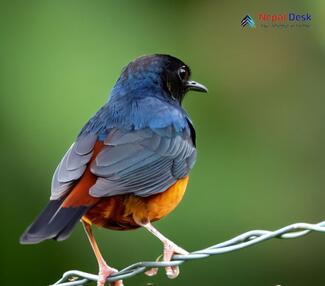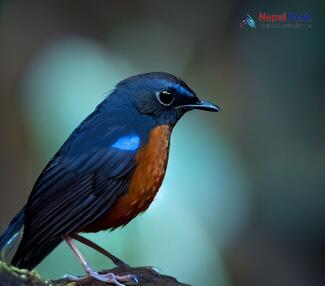The world of birds is diverse and fascinating, especially when it comes to lesser-known species such as the Rufous-breasted Bush Robin (Tarsiger hyperythrus). This small and elusive bird has several unique characteristics that make it a subject of interest for both avid birdwatchers and researchers alike. In this article, we will delve into the taxonomy, physical features, habitat, diet, and presence of this intriguing robin in Nepal.
Taxonomy and Physical Features
The Rufous-breasted Bush Robin belongs to the family Muscicapidae and the genus Tarsiger. Being part of the passerine order, this bird shares its lineage with other notable birds like flycatchers, thrushes, and warblers. Originally described by British ornithologist Brian Houghton Hodgson in the mid-19th century using specimens found in Nepal's hilly regions.
The Rufous-breasted Bush Robin is a small bird measuring around 13-14 centimeters in length and weighing approximately 15 grams. As its name suggests, this bush robin displays a distinctive rufous breast accompanied by pale blue-gray upperparts. The male boasts a striking orange throat and white markings on its wings and tertials. Females exhibit a slightly duller appearance with a paler orange throat.
Habitat
This inconspicuous bird inhabits dense undergrowth in moist montane forests at altitudes ranging from 2,000 to 3,500 meters above sea level. Inhabiting countries such as Bhutan, China (Yunnan), India (Arunachal Pradesh), Myanma (Kachin State), and northeastern India's Sikkim foothills. The Rufous-breasted Bush Robin's preferred habitats encompass rhododendron forests during the breeding season while descending to lower altitudes in the non-breeding season.
Diet
The Rufous-breasted Bush Robin's diet primarily consists of insects and other small invertebrates. With its slender and slightly curved bill, this bird skillfully gleans these morsels from the forest floor or low vegetation. Their insectivorous diet includes beetles, flies, caterpillars, and spiders, keeping the insect population in check within their habitat.
Presence in Nepal
Being one of the bird's original discovery sites, Rufous-breasted Bush Robins hold particular significance in Nepal. Bird enthusiasts can spot these elusive birds amid moist montane forests spread across eastern and central parts of Nepal. The prime destinations for Rufous-breasted Bush Robin sightings include Langtang National Park and Annapurna Conservation Area.
In conclusion, the Rufous-breasted Bush Robin is an enigmatic bird species that captivates birdwatchers and researchers alike. Its striking appearance, preference for dense montane forests, and insectivorous diet make it an essential member of the avian community in Nepal – not just for its own survival but also for maintaining the delicate balance of its ecosystem. To fully appreciate this diminutive species' beauty and significance, it's crucial to continue monitoring its population and conservation efforts to ensure its survival for future generations to admire.




